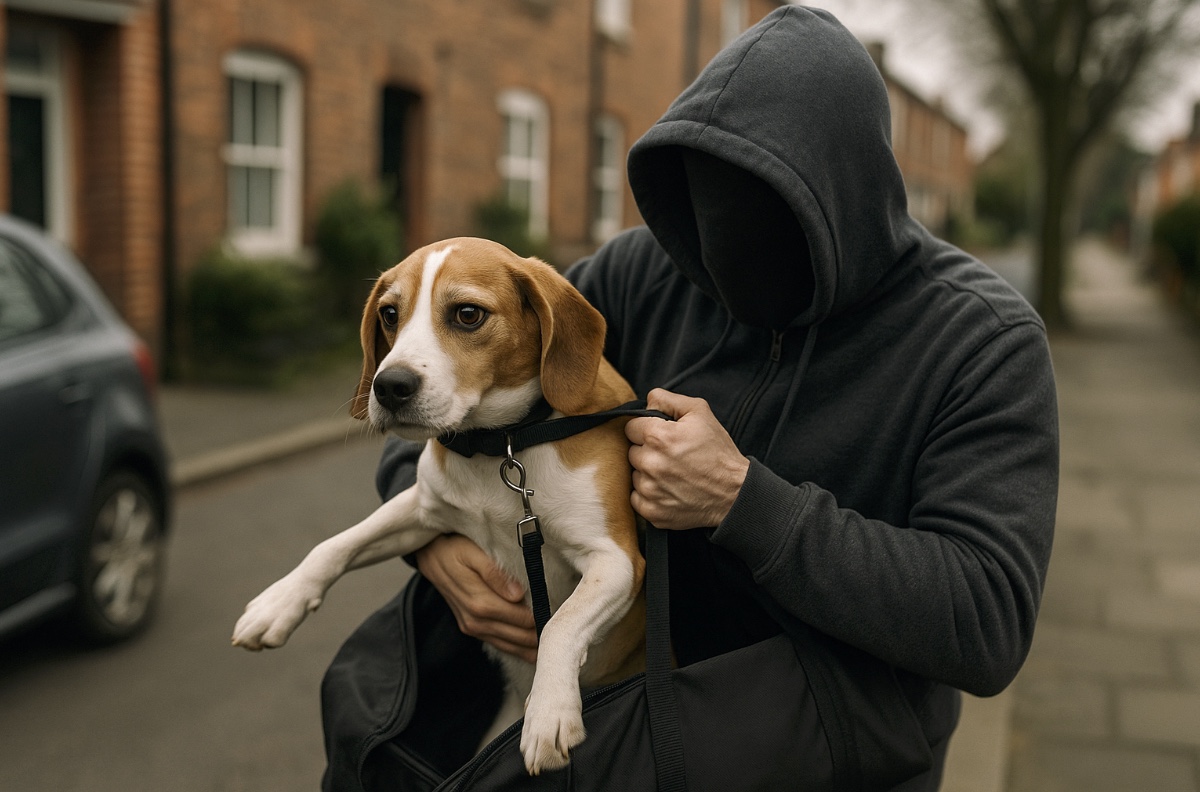
By Mark Gill, CEO of Petasure
Dog theft is not a new crime. But it is becoming more organised, more lucrative, and more disturbing.
If you’ve ever scrolled through social media only to see another heart-wrenching post about a missing dog, you’re not alone. Pet theft, especially dog theft, is on the rise. And while it’s tempting to dismiss these cases as isolated or unfortunate, the reality is far more shocking.
Some reports suggest that as many as 100 dogs are stolen every single day in the UK, with fewer than 1 in 10 cases formally reported. That figure may sound high but it barely scratches the surface.
A Crime with a Long History
Dog theft isn’t just a modern crisis. In fact, Charles Dickens noted it nearly 200 years ago, writing about wealthy dog owners being targeted by ransom scams. Back then, dogs were the preserve of the upper classes – today, they’re beloved companions for millions. But wherever there’s emotional or financial value, criminals will follow.
Fast forward to 2025, and the theft of dogs is no longer just a national issue – it’s a global problem, fuelled by demand, rising pet prices, and patchy deterrents.
How Dog Theft Happens
While some thefts are opportunistic, the majority are deliberate, strategic, and orchestrated by organised gangs. These criminals:
- Scout popular dog-walking routes, often watching or following owners home.
- Wait outside shops or cars, looking for unattended dogs – even for just a minute.
- Check housing estates for dogs left in front gardens, on driveways, or in visible kennels.
- Use intimidation, including thefts at knifepoint.
In most cases, the thieves have a pre-planned purpose.
Why Dogs Are Stolen
The fate of a stolen dog can be grim. Some are recovered. Many are not.
Typical outcomes include:
- Dognapping for reward – stolen and hidden until an owner offers a cash incentive.
- Blackmail – where a ransom demand follows quickly after the theft.
- Stolen to order – then passed to an unsuspecting new owner.
- Used for breeding – often repeatedly, with puppies sold on by dodgy breeders or corrupt shelters.
- Dog fighting – either as bait or fighters themselves. While banned in the UK since 1835, these events still occur underground and remain legal in parts of Russia, Japan, Latin America, and Eastern Europe.
- Sold to medical testing facilities abroad – a disturbing and lesser-known risk.
The Bigger Picture
Since 2019, dog theft has risen by a staggering 250%. The sharp increase in dog and puppy prices during the pandemic created a booming black market. With demand still outstripping supply in some areas, criminals now see dogs as fast-moving, high-value assets.
While new laws have been introduced – including the formal recognition of dog abduction as a distinct offence – enforcement remains inconsistent, and the rate of recovery is falling. Thieves are adapting. And owners are left feeling helpless.
What Can You Do?
Awareness is your first line of defence.
Here are practical steps that can make a real difference:
- Never leave your dog unattended, even for a short time.
- Vary your walking routes, especially if you own a high-demand breed.
- Secure your property, including gates, kennels and garden access.
- Use GPS collars or smart tags and keep microchip details up to date.
- Report thefts immediately, and share verified lost dog alerts through trusted channels.
Because our dogs aren’t just property – they’re our companions, our confidants, and for many of us, our closest family.
And they deserve to be protected.
For more information or to join Petasure today, visit www.petasure.co.uk
Collaborative Content

